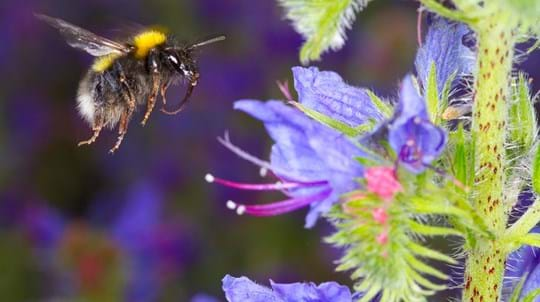
Credit: WTML
Where to find wood anemone
Wood anemones can be found in mature deciduous woodlands across the UK, as well as by hedgerows and meadows.
Sun-loving, gentle, a mark of the old. Wood anemone is one of the first spring blooms, arriving to take in the light through the leafless canopy in broadleaf woodland. Look for them in old and ancient woodland that suits their slow growth.
Common names: wood anemone, windflower
Scientific name: Anemonoides nemorosa (syn. Anemone nemorosa)
Family: Ranunculaceae (buttercup family)
Origin: native
Flowering season: March to May
Habitat: ancient woodland
Star-shaped and often seen covering the floor of mature deciduous woodland, wood anemone is a spring showstopper.
Leaves: each leaf displays three visible lobes and the stalks are long. The leaves are basal, meaning they are in a rosette at the base of the plant.
Flowers: petals are white, with a pinkish tinge. Many distinct yellow anthers are visible.
Could be confused with: wood sorrel (Oxalis acetosella) at a distance. Though the plants are similar, wood sorrel has distinctive pink veins in its white petals and the leaves are different in shape, with a rounded, heart-shaped appearance compared to the deeply lobed leaves of the wood anemone.

Credit: WTML
Wood anemones can be found in mature deciduous woodlands across the UK, as well as by hedgerows and meadows.

Wood anemone is an ancient-woodland-indicator plant. If you spot it while you're out exploring, it could be a sign you're standing in a rare and special habitat.
Learn more about ancient woodlandHoverflies are thought to favour this plant and to be significant in pollinating the species.
Wood anemones are named after the Greek god Anemos, who sent the flowers ahead of him in spring.
The presence of wood anemones can indicate ancient woodland as it is a slow-growing species which spreads via rhizomes – horizontal underground stems.

Credit: Niall Benvie / naturepl.com
Wood anemone is often found in ancient woodland, a habitat which is in desperate need of protection. As well as wood anemone, thousands of species rely on these complex and irreplaceable habitats.
The Romans considered wood anemones a 'lucky charm' and would pick the first flowers to appear each year to ward off fever.

Blog
Helen Keating • 18 Mar 2019

Nature's Calendar
Have you seen the first ladybird of the year or the last swallow of summer? Tell us about the nature near you and help scientists track the effects of climate change on wildlife.
External link